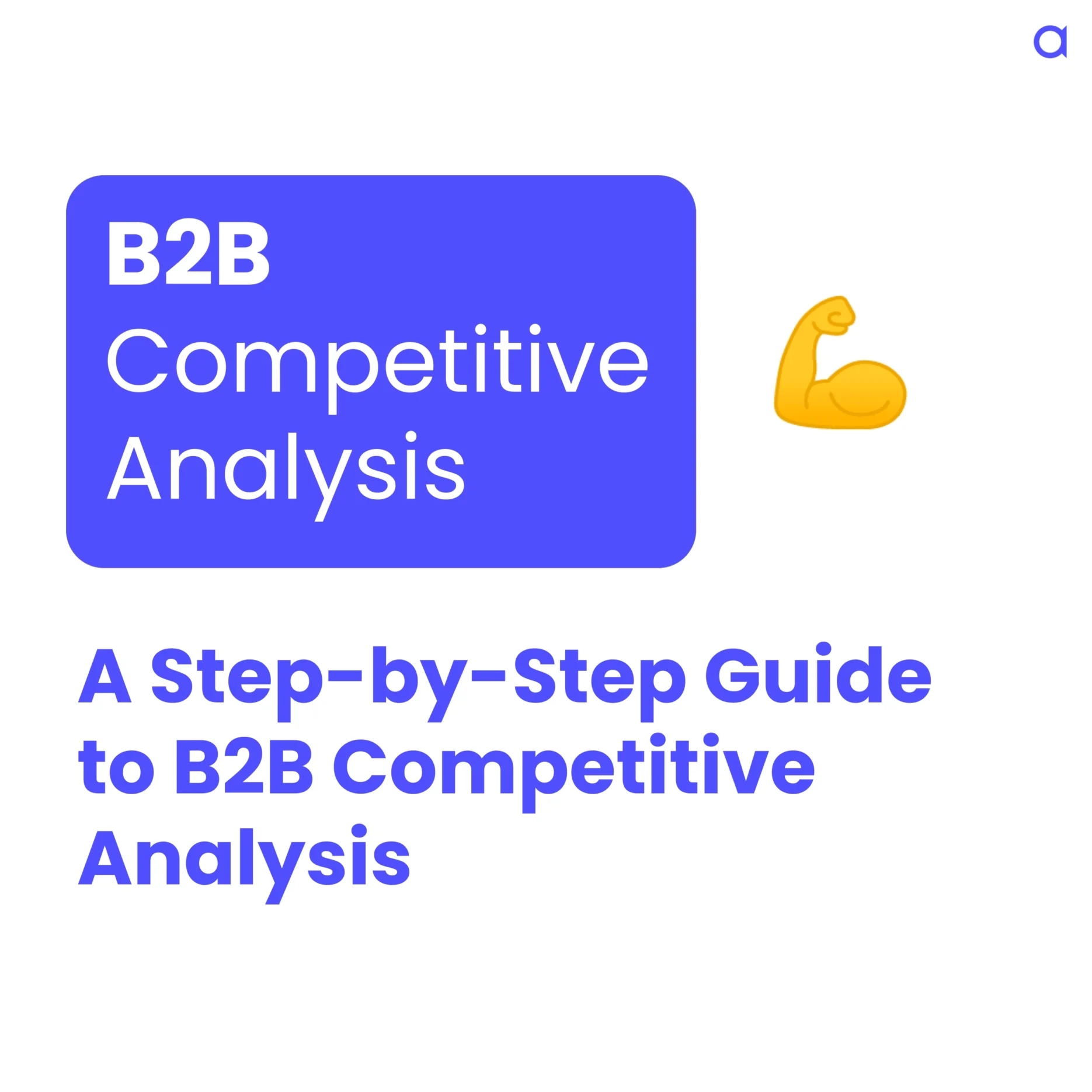This is no cheat sheet. Today having a comprehensive knowledge of your competitors and what they’re up to is no news but a common practice. Hence, a B2B competitive analysis is almost always vital.
Understanding what your competitor is doing is the first step to enhancing your own growth strategy, whether you’re preparing for the 2023 marketing plan, revamping your website, or simply evaluating your growth plan. It helps to identify new opportunities or threats.
With this wide market, there’s a lot of trial and error that you don’t have to go through by identifying what has/is working for others and what might not.
The Importance of Competitive Analysis for B2B Businesses
A competitive analysis is a process in which a company thoroughly researches and analyzes its competitors’ strategies, strengths, and weaknesses to make better business decisions. This analysis can be done for an entire industry or a specific set of competitors based on their product, service, or delivery model.
A B2B competitive analysis helps you understand how your competitors operate and find potential possibilities to outperform them. While they are famous for e-commerce, such analyses are crucial regarding brand positioning for B2B businesses too. It can save you time and money from overly loved strategies. And a lot more like
- Identifying your story and what makes you unique – known as your service’s unique value proposition (UVP) and what makes it distinctive- can help you navigate your marketing effort and stand out in the market.
- Collect information on what services are currently available to your customers and what is missing.
- Determinate your competitor’s best attributes to ensure that you are relevant and outperform industry standards.
- Pinpoint your competitor’s weaknesses, which can help you find areas of opportunity in the marketplace and test new marketing strategies.
- Set a benchmark by which you measure your company’s growth.
So, now that we’ve emphasized the importance of a competitive strategy might come the following question – where to start?
A Goal
Before putting “Conduct a Competitive Analysis” on your task manager, figure out your goal. Why is it essential for you, and how will you use it?
Recognize that you should already have a clear picture of who you are as an entity and who you are selling to. If you haven’t yet defined your buyer personas and buyer journey, you may not be ready for competition analysis.
Not having a thorough understanding of who your market is and why you need a competitive analysis (now) might lead you to look into the wrong competitors, and your time will be poorly invested. Speaking of, how do you determine the right competitors with such a large market?
Determine Who Your Competitor Is
There are two types of competitors you should keep an eye on:
- Direct Competitors: these are your neighbors. The first brands that come to your mind when you think of competitors. They market the exact solutions and/or services and target your audience. They can be local or international based on your market. But try to be realistic and not set yourself up for disappointment by ranking elite companies that have been in the business for years.
- Indirect Competitors: are more challenging to identify. They meet the exact customer demands of your company, but differently. Your target audience will overlap with theirs, but not exactly. Let’s say you’re a tech company conducting a competitive analysis about attracting talent. Recruitment agencies are your indirect competitors since they hunt for the same resources.
Indirect Competitors are very common when performing a digital marketing competitive strategy. Your content and ads are probably fighting with millions of others trying to rank and reach a specific audience.
There can be different reasons why you’re (planning to) work on a competitive analysis. Based on your goal, your competitors might differ. For insurance, you want to do a competitor analysis on content creation, so you identify (not direct) competitors who invest in that area.
Analyze Their Sales Tactics & Marketing Efforts
It can be challenging to research and analyze your competitors’ sales strategies. Businesses are unlikely to give their trade secrets or sales techniques. To begin, examining the following aspects of your competition’s sales cycle can help you determine competitiveness:
- The sales process
- Main channels of distribution
- Their position and tone
- Why do customers buy their services?
- Programs for reseller partners
- Revenues
- Promotions or discounts
You can even find annual reports for publicly traded corporations may be found online, but for a private company, you’ll have to dig deeper.
Website and Content Efforts
Learn about the type of content that resonates with your customers and how it is being distributed. This can help you better tailor your marketing strategies and improve your reach of customers.
Identifying your competitors’ efforts or lack of efforts with content marketing can help you map out the right SEO strategy and rank higher.
Websites can tell a lot about one’s sales strategy. Website architecture and copy are created based on the sales cycle plan and position. Every company makes sure to include its strongest points in the hero section (the first section you see). Keeping an eye on these details can reveal everything you need to do or don’t to set yourself apart from the competition.
Evaluate Their Social Media Strategy
For B2B businesses, a lot can be said based on the main channel they invest on. For instance, If a competitor seems to post often on TikTok, that might signal they are trying to engage more with a younger audience since TikTok is known for being ruled by Gen-Zs.
This can help you understand how your competitors reach their customers and how their business is run. By understanding your competitors’ marketing strategies, you can determine if there is an opportunity to differentiate yourself and the type of content that resonates with your customers. This can help you better tailor your marketing strategies and improve your reach of customers.
What after the B2B competitive analysis?
After you have conducted a b2b competitive analysis and gathered data and insights from your competitors, you can now utilize this information to improve your business. This analysis will help you make strategic decisions to help you reach your business goals. It will help you better understand your industry and provide insight into what your customers want in a product or service.
Gather your writings and team and start mapping out the growth strategy. Be realistic with your data and goals. Have a clear picture of your strengths and weaknesses, and don’t set unrealistic KPIs that might drive your team to burn out.
Check these templates to ensure you track the right variables and comprehend an effective competitor analysis.
An External B2B Competitive Analysis?
Finally, if you need to work on such research but do not have the entire time or expertise to spend on this, I advise you to check out some of this freelancer’s gigs.
A detailed competitor’s Analysis showcasing all details about your competitors. For instance, their market share, social media performance and data, products analysis, technologies, SWOT analysis, and a few competition graphs.
| Timeframe | 15 days | |
| Budget | $500 | |
| Design | Included | |
| Questions? |
The Freelancer Behind This Service

A pitch deck writer’s most important aspect is understanding you and what you are trying to say. While that sounds quite obvious, it requires years of experience.
My objective is to open up your mind and sit inside there for a while to understand what’s going on. Then I’d be fully able to help you with your investment or business document.
I’m Sam, and you can easily contact me through my email for any questions: sam@albusi.com
Finally, if you are looking for a different consultant, I would recommend you check this page.
For further information and updates about our offers, check Albusi’s LinkedIn page.





